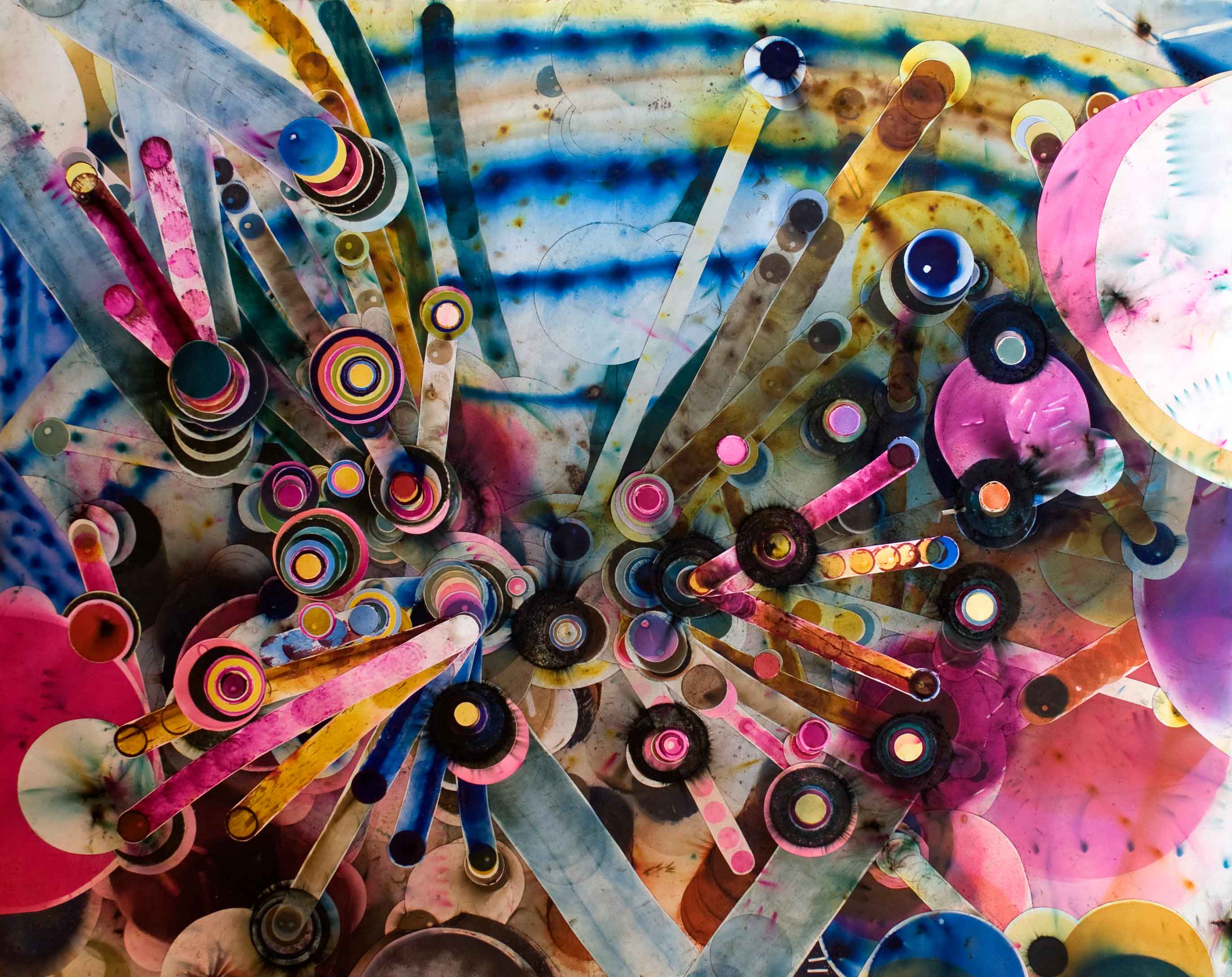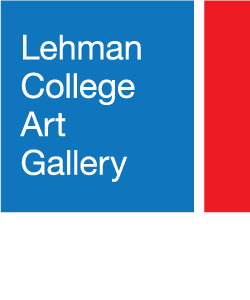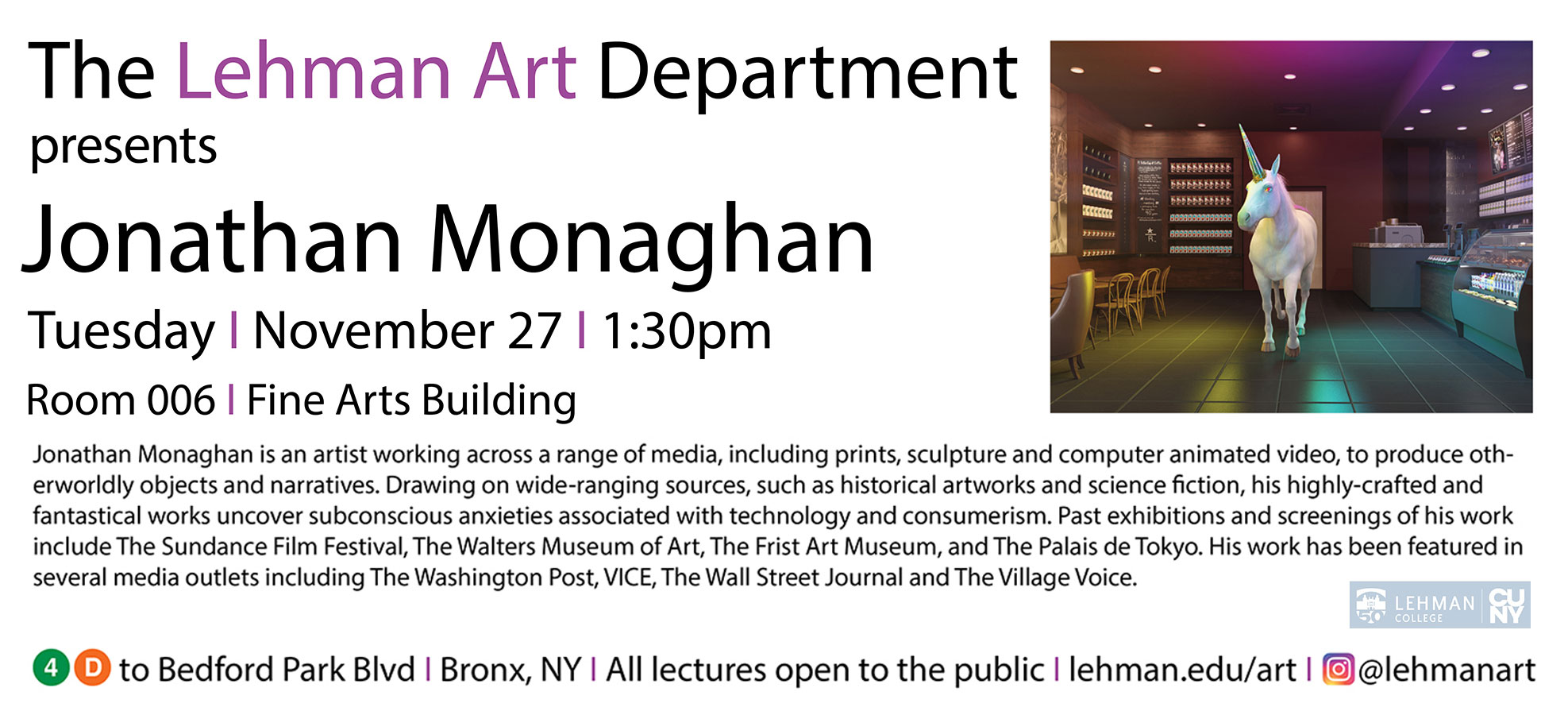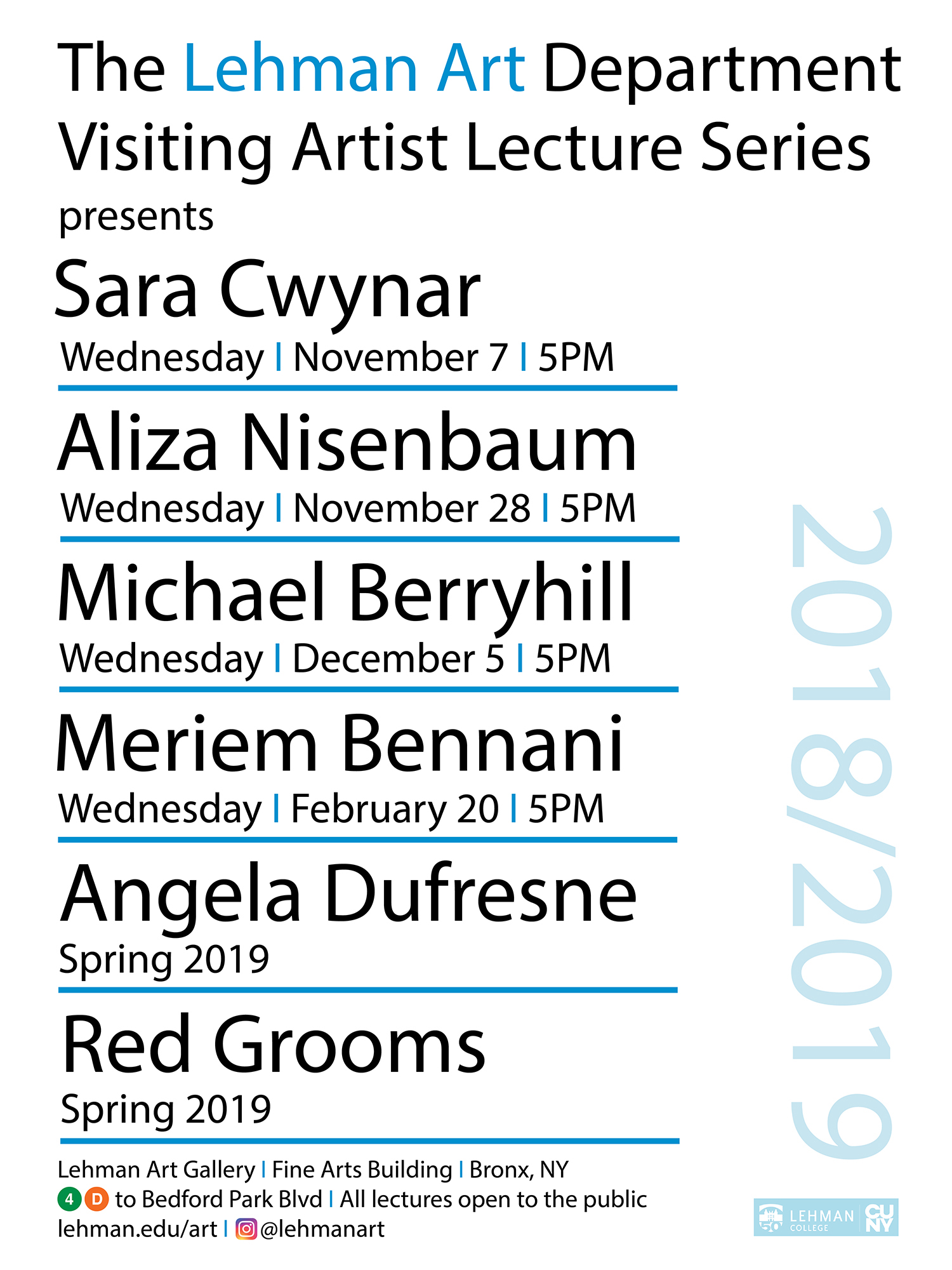Smoke
October 6 – January 5, 2016
Their lush, saturated colors and lyrical passages result ironically from the power of explosions—things like jumping jacks, monster balls, rings of fire, and lasers. For
The notion of using smoke bombs to draw with occurred while Fiore was at an artist residency in Roswell, New Mexico in 2002. During a celebration, she noticed the carbon trail of an accidentally dropped smoke bomb as it moved across a cement floor. It was the beginning of the experimentation that led to

Fiore sometimes mentions the Green Man, a historic figure closely associated with fireworks. Perhaps rooted in Dionysian rituals, the Green Man announced festivities and led the way for processions. Carrying a fire club and wearing a costume covered with foliage as insulation from the sparks, his role was in part performance, and like Fiore, he conveyed the spectacle of pyrotechnics.
The exhibition includes Fiore’s large-scale drawings and collages, several of her machines with their preparatory sketches, and a video documenting her process. Fiore makes her home and studio in the Bronx in a neighborhood where her grandparents once lived. (1)
(1) The Smoke Painting Machines were developed during the Art OMI residency in Ghent, NY—this is also where the video was shot and produced.
Rosemarie Fiore’s work has been shown internationally as well as throughout the United States. Her work has been reviewed in numerous publications including Art in America, Artforum, The New York Times, New York Magazine, The Village Voice, NY Arts Magazine, Art Papers Magazine, The Washington Post, and Art on Paper. Upcoming solo exhibitions in 2015-6 include Von Lintel Gallery, Los Angeles; The Weatherspoon Museum, Greenboro, NC and the Albright Knox Art Gallery, Buffalo, NY. She is represented by Von Lintel Gallery, Los Angeles.
Susan Hoeltzel


